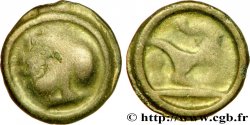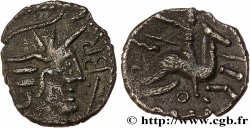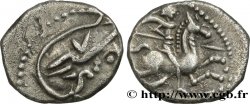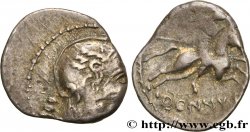bga_253240 - GALLIA - RHONE VALLEY Potin au long cou
140.00 €
Количество
Добавить в корзину

Тип Potin au long cou
Дата: c. 70- 10 AC.
Металл: potin
Диаметр: 17,5 mm
Ориентация осей монеты: 9 h.
Вес: 3,32 g.
Редкость: R1
Комментарии о состоянии
Potin bien identifiable, avec un droit et un revers homogènes. Patine verte et un peu granuleuse
Ссылки в каталоге: :
Лицевая сторона
Аверс: легенда: ANÉPIGRAPHE.
Аверс: описание: Tête stylisée à gauche avec une barre oblique en Y.
Обратная сторона
Реверс: легенда: ANÉPIGRAPHE.
Реверс: Описание: Animal stylisé, chargeant à gauche ; ligne de sol.
Комментарий
Exemplaire lourd pour ce type, sur un flan relativement large.
Tous ces potins sont mal classés, confondus entre les Bituriges, la Vallée du Rhône, les Arvernes, le Centre... l’attribution à la Vallée du Rhône, si elle est valide pour les denier au cavalier, n’est guère plus satisfaisante que d’autres pour ces potins ! Ils ont aussi pu être coulés par des peuples voisins, pour une “circulation large”.
Heavy example for this type, on a relatively large blank. All this gossip is poorly classified, confused between the Bituriges, the Rhône Valley, the Arvernes, the Center... the attribution to the Rhône Valley, if it is valid to deny them to the rider, is hardly more satisfactory than others for this gossip! They could also have been sunk by neighboring peoples, for “wide circulation”
Tous ces potins sont mal classés, confondus entre les Bituriges, la Vallée du Rhône, les Arvernes, le Centre... l’attribution à la Vallée du Rhône, si elle est valide pour les denier au cavalier, n’est guère plus satisfaisante que d’autres pour ces potins ! Ils ont aussi pu être coulés par des peuples voisins, pour une “circulation large”.
Heavy example for this type, on a relatively large blank. All this gossip is poorly classified, confused between the Bituriges, the Rhône Valley, the Arvernes, the Center... the attribution to the Rhône Valley, if it is valid to deny them to the rider, is hardly more satisfactory than others for this gossip! They could also have been sunk by neighboring peoples, for “wide circulation”







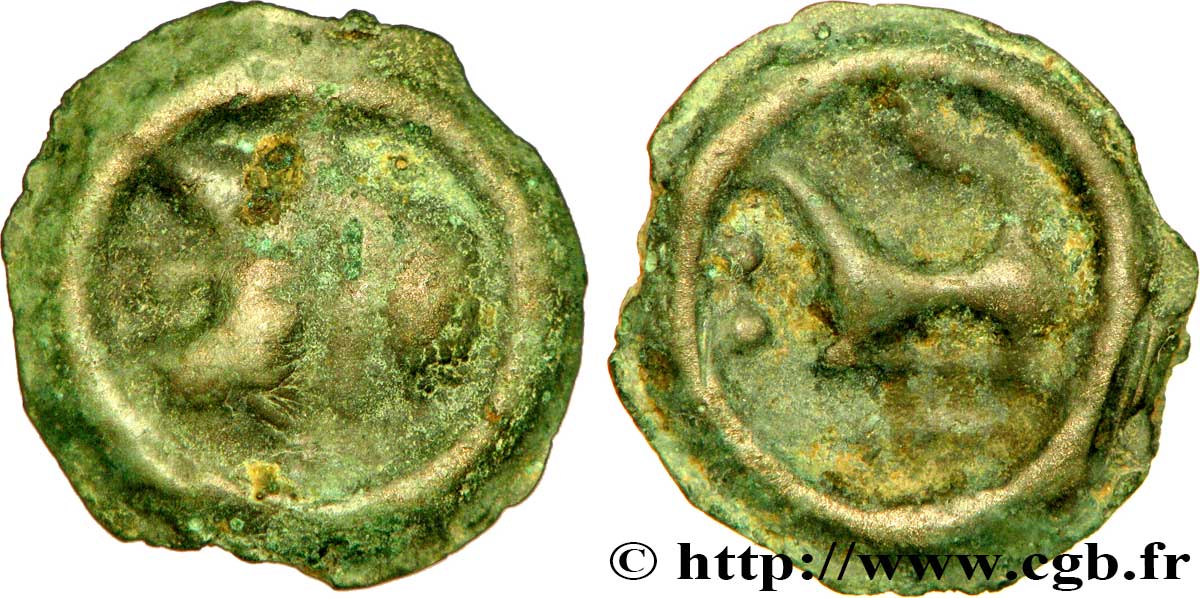
 Cообщить об ошибке
Cообщить об ошибке Распечатать страницу
Распечатать страницу Отправить мой выбор
Отправить мой выбор Задать вопрос
Задать вопрос Consign / sell
Consign / sell
 Информация
Информация